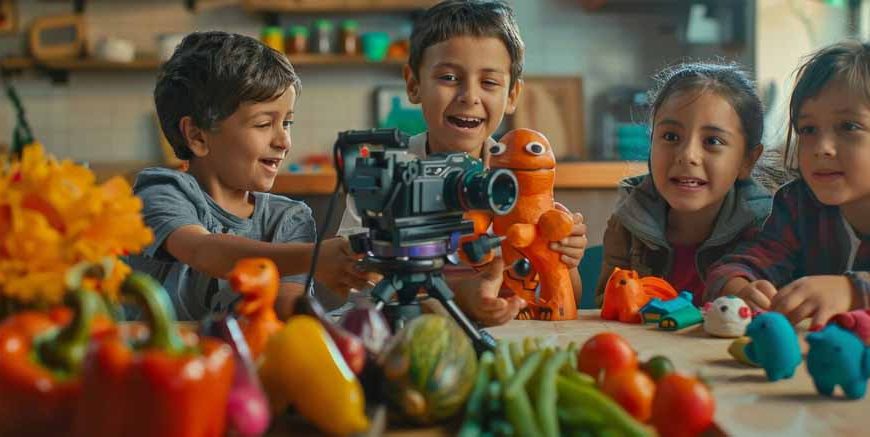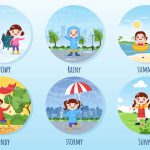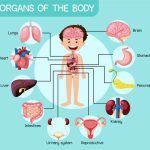What comes to your mind when you think of learning? A classroom? A teacher? Books and desks?
That’s part of it. But today, an educational environment goes far beyond that.
Common, let us break it down.
An educational environment: what is it?
The physical and emotional space where learning happens is recognised as an educational environment.
It encompasses the actual classroom, the instructors and pupils, the supplies utilised, and even the atmosphere of the space. The space and the blackboard aren’t the only factors. It has to do with how a child feels in the room. Safe? Curious? Involved?
When a child feels supported and encouraged, they learn better. That’s the foundation of a strong educational environment.
Why an Educational Environment Matters?
The kind of space a child learns in shapes how they think, ask questions, and solve problems.
A poorly lit, cramped room with no learning aids limits growth. A welcoming, well-equipped physical classroom creates room for imagination and participation.
Learning isn’t just about textbooks. It’s also about comfort, structure, and the freedom to explore. An environment that supports this builds confidence and skills in every child.
Also Read- Positive Learning Environment for Preschooler
Core Elements of an Educational Environment
Let’s break the educational environment into five core parts:
- The Physical Space
- The Role of teacher
- Peer Interactions
- Emotional Safety
This is where it starts. The size of the room, ventilation, furniture, lighting—everything matters.
Is the classroom clean and organized? Can children move around freely? Are the learning materials accessible? For example, a physical classroom that has flexible seating allows group work, independent reading corners, and open floor areas for activities. Such variety helps cater to different learning styles.
The role of the teacher is central. Not just as an instructor, but as a guide, listener, and sometimes even a cheerleader. The teacher sets the tone. A teacher who encourages questions builds a space where children feel safe to express ideas. One who shows patience helps develop resilience in children.
In many ways, the teacher shapes both the emotional and academic climate of the classroom.
Children learn a lot from each other. Group tasks, class discussions, even playtime—they’re all opportunities for social learning. Do children listen to one another? Do they respect different viewpoints?
Students can gain teamwork, empathy, and camaraderie in a healthy educational environment.
Curriculum and Materials
Are the lessons age-appropriate? Do they allow room for creativity and critical thinking? The educational environment is also influenced by the kind of content shared with children. If the curriculum is rigid or outdated, children may lose interest. If it’s too open-ended without structure, they may feel lost.
A balanced mix is ideal.
Are children allowed to make mistakes? If they’re not sure, can they speak up? Children who feel emotionally comfortable might take chances when studying, such as trying a new maths problem or speaking in front of the class. Avoiding punishment isn’t the only goal here. Comfort and trust are key.
In many ways, education and environment are tightly connected through emotions. When the emotional climate is nurturing, the brain is more open to learning.
Also Read- Tips for Creating a Productive Study Environment for Kids
Physical Classroom vs. Other Learning Spaces
Today, learning happens in many forms—online, at home, in parks, or museums. But the physical classroom still holds value. It’s a structured space that signals: this is a place for learning. It provides access to group learning, face-to-face feedback, and instant support.
However, flexibility is key. An educational environment that adapts—like using outdoor areas for nature lessons or turning corridors into reading zones—helps enrich the learning experience.
The Role of Parents and Home
Learning doesn’t stop at school. Is your child’s home space calm? Do they have a spot to read or do homework? What kind of conversations do you have with them? When you ask your child what they learned today, you’re extending the classroom into the home. You’re showing that learning matters.
You don’t need fancy tools. A small reading corner, regular bedtime stories, or involving your child in daily tasks can become part of their educational environment.
Also Read – Creating Peaceful Classrooms
What Can Schools Do Better?
Many schools already offer great facilities. But what more can be done?
- The role of teacher is important. Train teachers not just in content, but in empathy and communication.
- Design classrooms with natural light, clean air, and quiet zones.
- Encourage feedback from children about what helps them learn better.
- Involve parents regularly—not just for PTMs, but through workshops and community activities.
Check Out – How to Keep Students Engaged & Active in the Classroom
What Can You Do as a Parent?
Here are a few simple but effective things you can do:
- Ask your child what part of the day they liked most at school.
- Create a consistent home routine.
- Let your child make small choices—like picking the book they want to read.
- Attend school events and connect with teachers when needed.
Even small actions can improve the overall education and environment your child experiences.
Also Read- Strategies for Enhancing Children’s Learning Skills
Questions to Think About
- Is your child excited to go to school?
- Do they share their school experiences freely?
- Are they curious about the world?
If the answer is yes, they’re likely in the right educational environment.
If not, it may be worth exploring how things can improve—both at school and home.
Final Thoughts
So, what is an educational environment? It’s more than just walls and a timetable. It’s the mix of physical space, emotional safety, peer interaction, teaching style, and content. All of these influence how a child grows, thinks, and learns. You don’t need perfection. You just need awareness.
A good educational environment doesn’t come from one big change. It comes from many small, thoughtful steps—taken by schools, teachers, and parents.
At EuroKids, we believe learning should happen in a place that feels safe, happy, and engaging. Our programs are designed to nurture every part of your child’s growth—through carefully planned spaces, well-trained teachers, and learning experiences that go beyond the textbook.
Because when the environment is right, everything else follows. Visit www.eurokidsindia.com to know more.
















